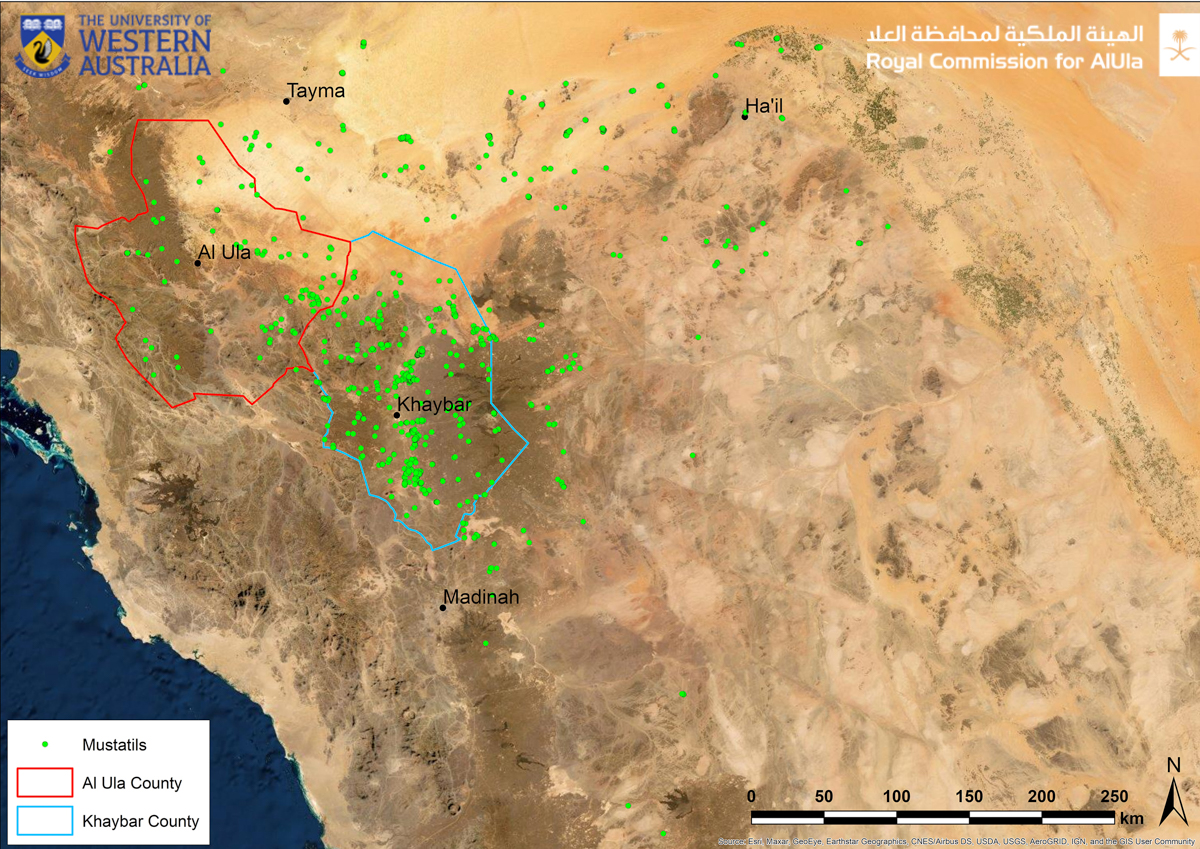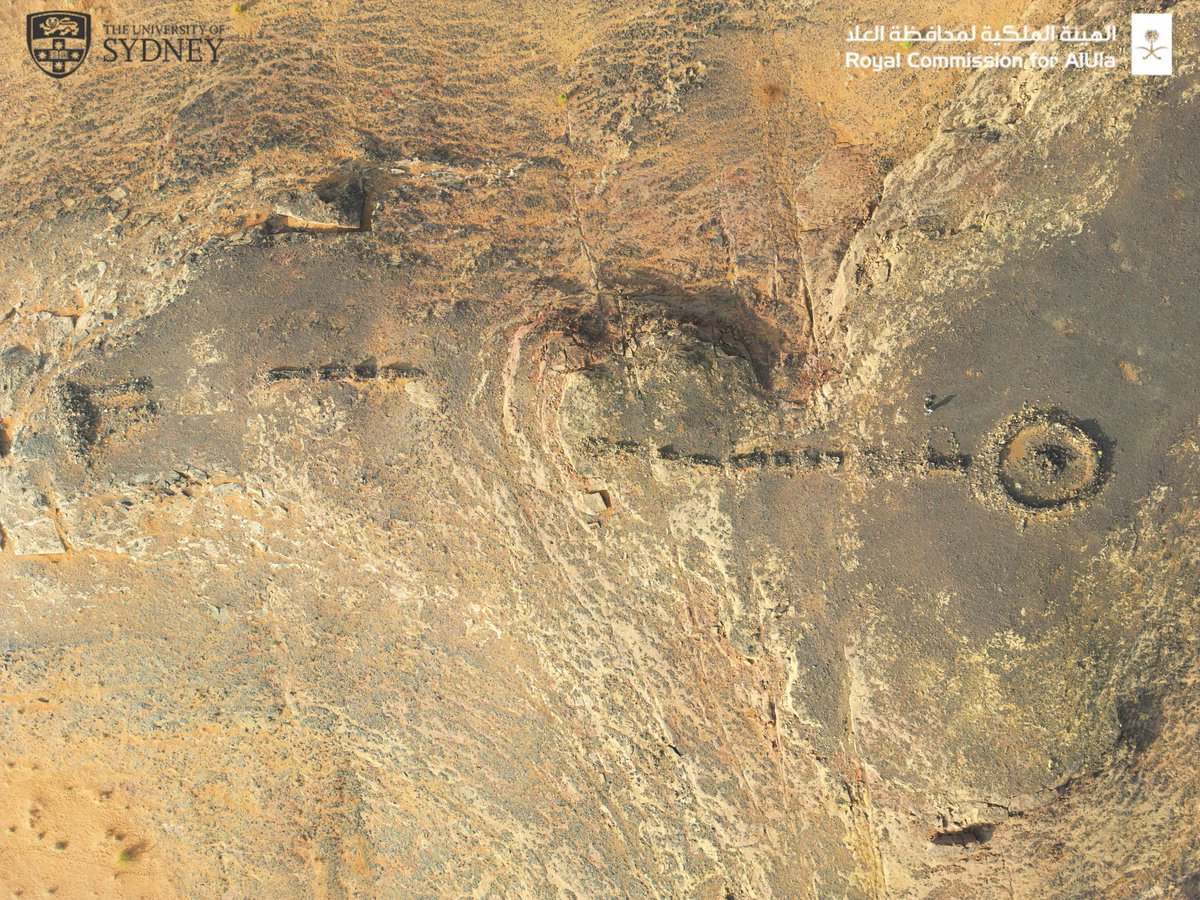'The mustatils: cult and monumentality in Neolithic north-western Arabia' is out today. This work is part of the University of Western Australia's @UWAresearch work in #AlUla and #Khaybar as part of @RCU_SA archaeological program. Download here: dx.doi.org/10.15184/aqy.2… Thread 1/ 

2/ We have recorded over 1000 of these structures, covering an area of 200,000km². This is remarkable when we consider these Neolithic structures are 7000 years old! So, what is a mustatil? 

3/ Mustatil are complex monumental structures consisting of two thick ends (base and head) connected by 2 or more long walls to create a series of courtyards, that look like big rectangles (mustatil, in Arabic) from the air. Mustatils range in length from 20m to over 600m. 

4/ The base of the mustatils often have circular/semi-circular cells constructed outside the main entrance. These cells generally had large orthostat stones placed inside them. Where the stone wasn’t suitable for this, they stacked stones to create pillars. 



5/ We also often find unusual I-shaped structures near mustatils. At present, we are unsure of what these features were used for. 

6/ You’d likely enter a mustatil through an entrance in the base, leading into the courtyard. These were generally very small, only 30-50cm in width. Certainly, access was single file and no large animals would have been able to fit through. 

7/ The long walls of the mustatils are relatively low, often only a few courses high. It is very easy to step over them - so we can tell they were not designed as animal pens or to collect water. They were built to define a space. 

8/ Most mustatils only have two or three long walls, which creates one or two courtyards. Although, some have up to four courtyards. Here is a mustatil with three. 

9/ Ground survey of dozens of mustatils has shown they generally do not have any artefacts inside or around the structure. We have only found the odd artefact, such as this beautiful obsidian tool. 

10/ At the head of the mustatil, you would find a chamber. This was the focus of the structure. In the mustatil we excavated we uncovered large upright stones (betyls) inside the chamber, perhaps stone representations of god(s). 

11/ Our excavation report on the chamber is forthcoming, but we can reveal that inside our mustatil we found a significant quantity of horns, primarily cattle. These horns were placed around the central betyl. 

12/ The horns are beautifully preserved and are comprised of a bone core and a keratin sheath. Keratin is what our nails are made of. What you see in this picture is the keratin. Now consider that this horn is over 7000 years old. The preservation is outstanding! 

13/ We were fortunate that other colleagues at @oatweet and Wael Abu-Azizeh have also excavated mustatils (Publications forthcoming) which has helped us greatly with our research. See what they found in the documentary Architects of Ancient Arabia
14/ We have estimated that one mustatil we surveyed(pictured) was constructed from about 12,000 tonnes of stone, that suggests that communities may have come together to construct these impressive structures. This mustatil is 525m long. 

15/ The fact that these structures are found over more than 200,000km² suggests these Neolithic peoples shared similar religious beliefs and had a shared building tradition. 

16/ Early evidence for cattle cult has been found in Yemen (doi.org/10.1111/j.1548…), but the evidence from AlUla predates this by about 900 years. Here are two C14 dates from the structure. 

17/ We are not the only team to be working on these spectacular structures. We are thankful to David Kennedy who started this journey for us (doi.org/10.1111/aae.12…) & @huwgroucutt (doi.org/10.1177%2F0959…) and the rest of the Max Planck team for their earlier work and insights
18/ The mustatil are truly impressive. We need to thank RCU for their support. We are just one team of many who are part of @RCU_SA archaeological work in the region. Check out the pioneering archaeological institute they just announced. prnewswire.com/ae/news-releas…
Our paper is open access! Download it here for free! Thank you so much to @AntiquityJ /End
cambridge.org/core/journals/…
cambridge.org/core/journals/…
• • •
Missing some Tweet in this thread? You can try to
force a refresh

























